
This is a 6”x 9” drypoint intaglio print etched on plastic. I based on a photograph I would always look at as a child in my father’s memory box. When I pursued this project, I found out that it was an image of my aunt whom I never met taken on a camping trip in the 1970s. It was an interesting experience getting to know her solely through this image.

This is a 9”x 12” copper plate etching. This was based on a photo my sister took at a market in Valencia, Spain a few years back. I wanted to capture nuanced illustrative surreal qualities through an observational study of a 35 mm film photograph. Film has a way of ignoring blemishes in a scene or taking particular notice of it, making it beautiful rather than merely a flaw in an otherwise beautiful scene. It was my intention to capture the subtleties of this image, staying true to certain realistic elements in some areas and in others departing from reality, entering a more illustrative realm in an effort to capitalize on the dream-like, ethereal beauty initially captured in the film.
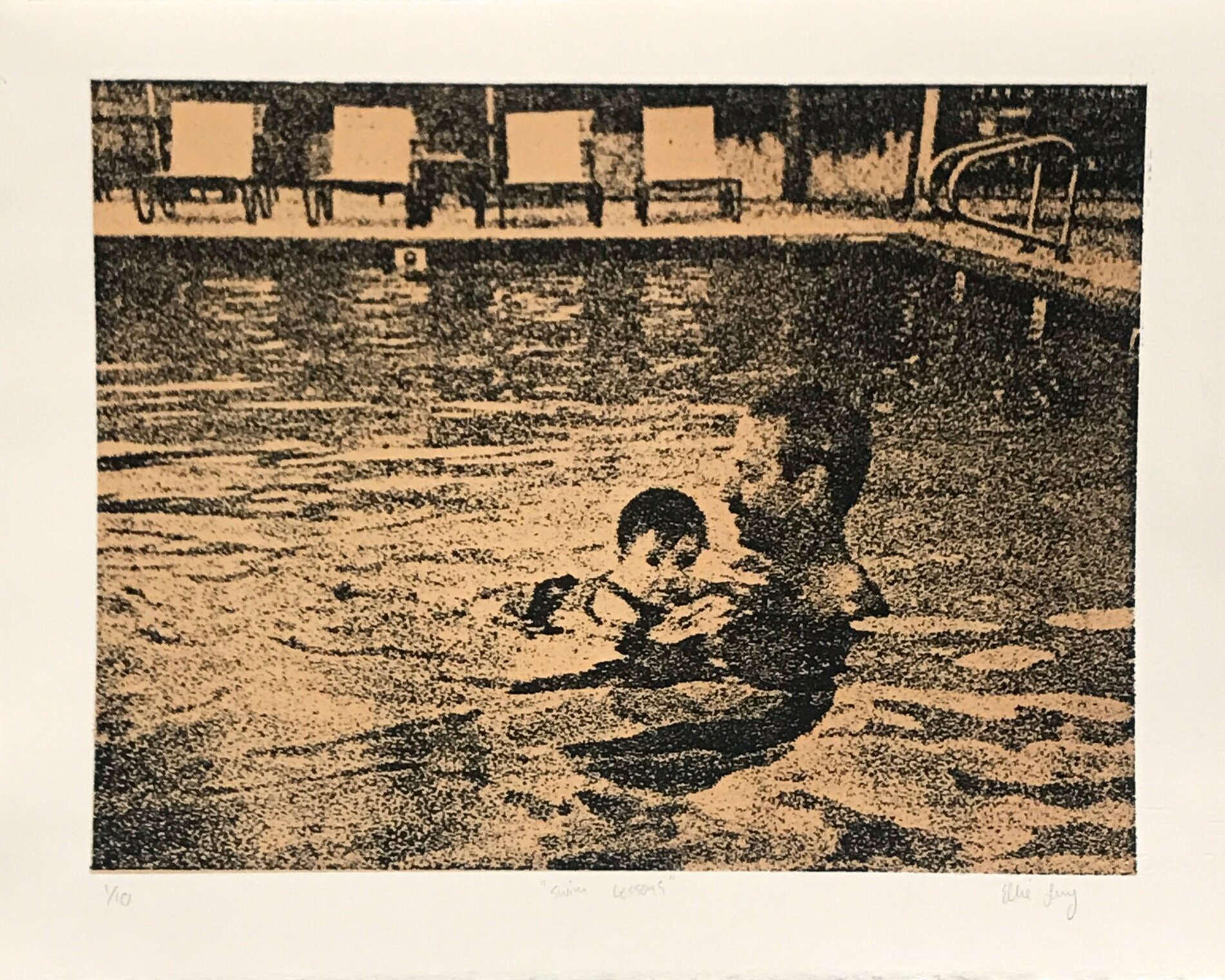
This is a 12” x 9” wood cut print, partially laser-engraved and partially hand-carved. The image depicts my father and me in the community pool at my grandmother’s condo in Los Angeles county my sister and I spent many-a-summer in and around. This print and the 2 that precede it were part of a small collection of prints that expanded on an instant, ephemeral memory. Spending more time than that which is prescribed or allowed by a photograph or memory is a way of honoring a memory, in my opinion– exploring deconstructing it and reconstructing it through attentive mark making in an effort to visually and tangibly recall it and grapple with the nostalgia it evokes.
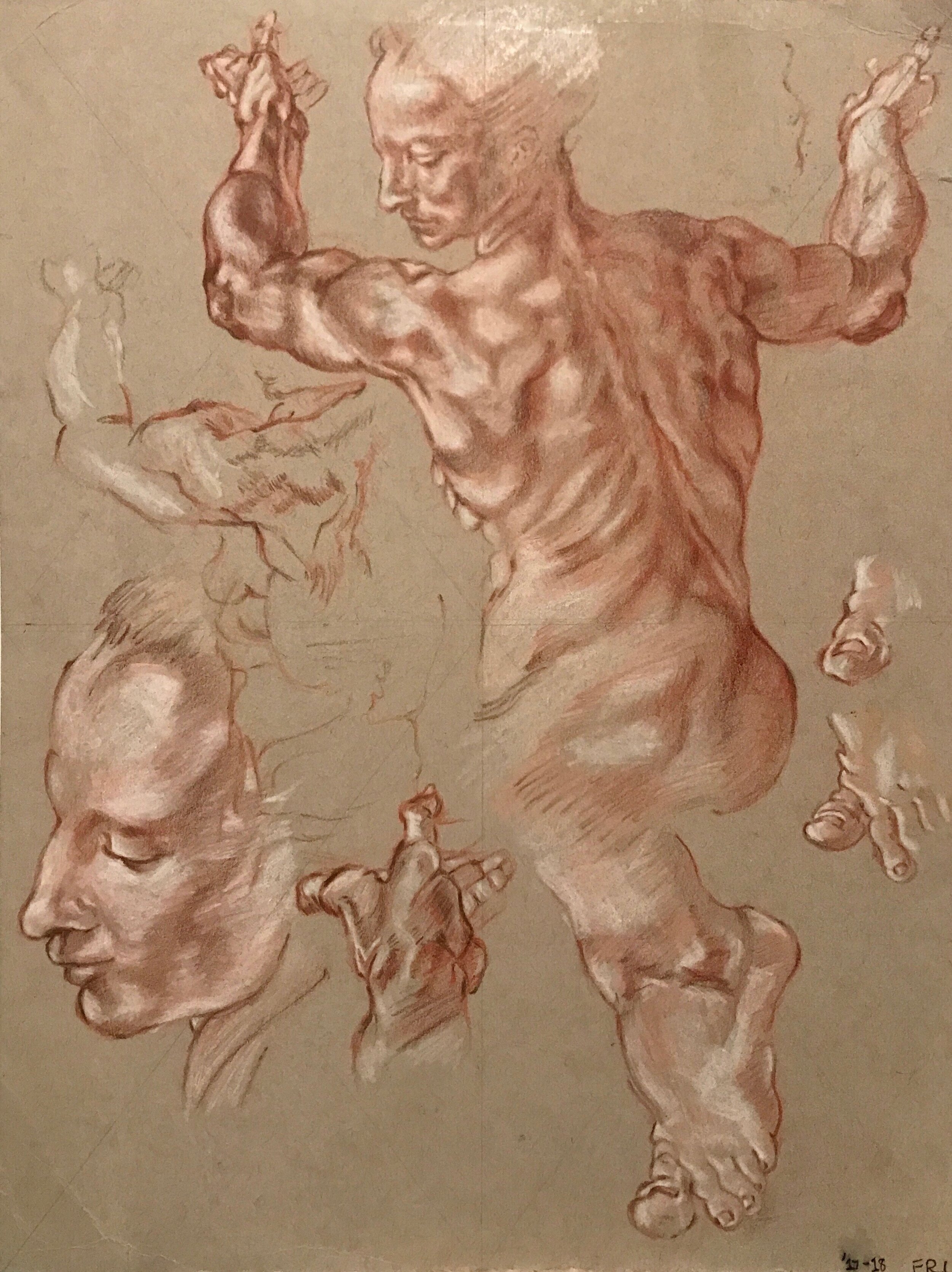
This was observational study of Michelangelo’s “Sibyl” sketch I began as a freshman in college. I rendered it in wax colored pencil and art crayon on toned paper. This was a really interesting study I found myself revisiting over the course of over a year. I found I was more critical than I typically am in rendering sketches given that I knew what the resolved image should look like, so each mark carried more significance and precision. I learned a lot from this drawing including how to apply the same critical mentality to work I create originally, which was a blessing (and a curse) to acquire.

This is a 16” x 24” texture map of Los Angeles county, CA, where I grew up. I used acrylic paint applied on transparent paper mounted to wood. I traced over 2 different archival maps and 1 contemporary map to collect different information– certain areas and lines I wanted to see in it– and then mounted it to wood using rice starch paste. The patterns signify where I existed in the city at the age intervals described in the map key and new places I was exposed to at those ages. This texture map is intended to seem like a nostalgic toy. When one interacts with it, they see a map, something they recognize and expect to understand, but they have to touch and explore it in order to collect the information it offers and it still maintains sort of disorienting qualities a child would accept as overwhelming to grapple with. In this way, it is supposed to make the viewer feel like a child since this map traces my development as I grew up. The designs get more complex and fluid as the years increase, sort of referencing artistic growth too and where I was able to explore creative inclinations throughout the city as I grew within it.

This is the map key that corresponds with the texture map. It is a block of wood, intended to evoke “nostalgic toy” qualities. The writing was traced on transparent paper and then mounted to wood using rice starch paste and the textures were created through depositing acrylic paint using a bottle with a hollow needle attachment.

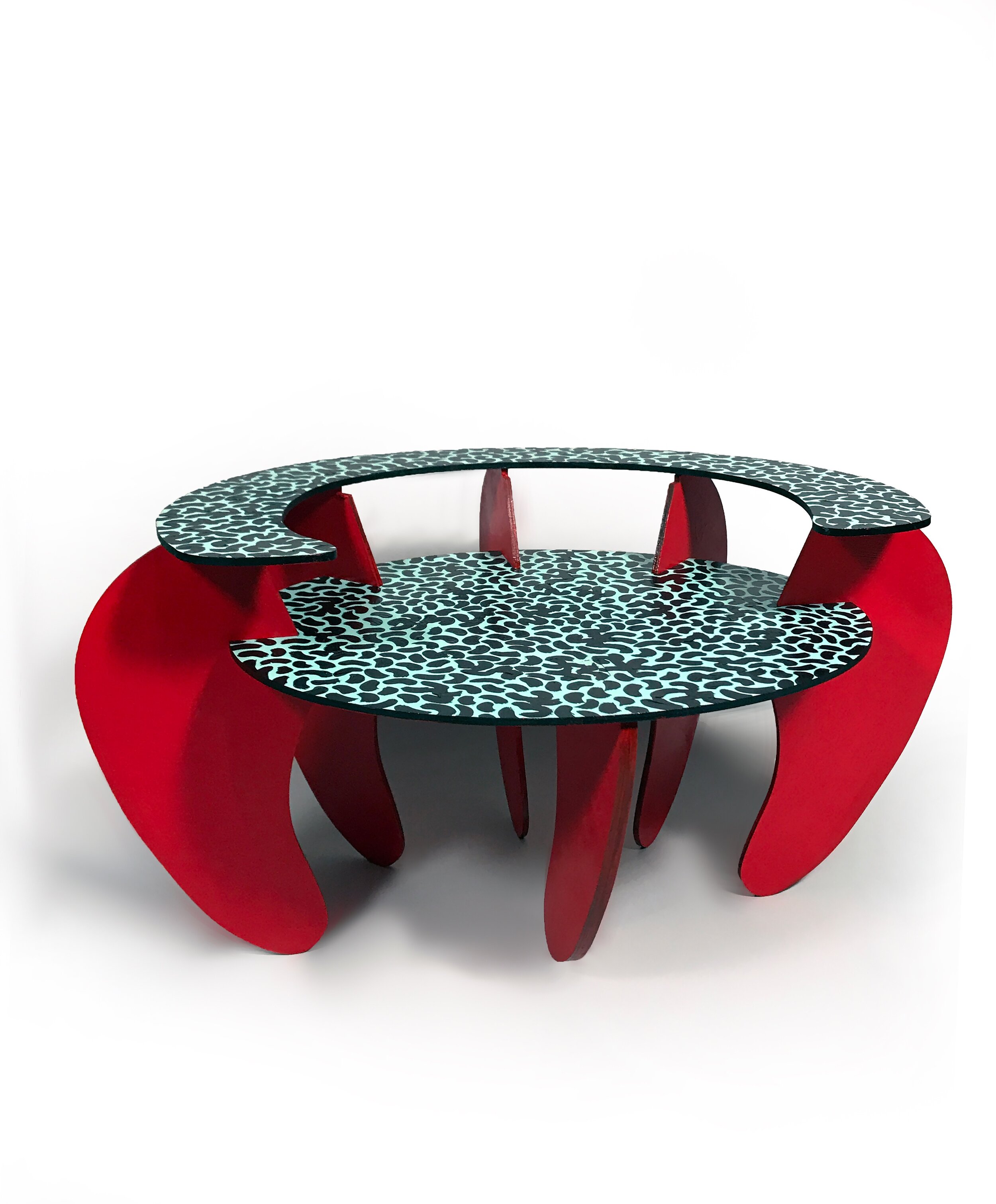
This is an unconventional stool constructed of laser-cut birch wood and painted with acrylic beneath a layer of varnish. This was an exploration of how transferrable the designs I apply in ceramics are to other objects, functional or not functional, explored in a project I made a few years ago as a freshman in college.
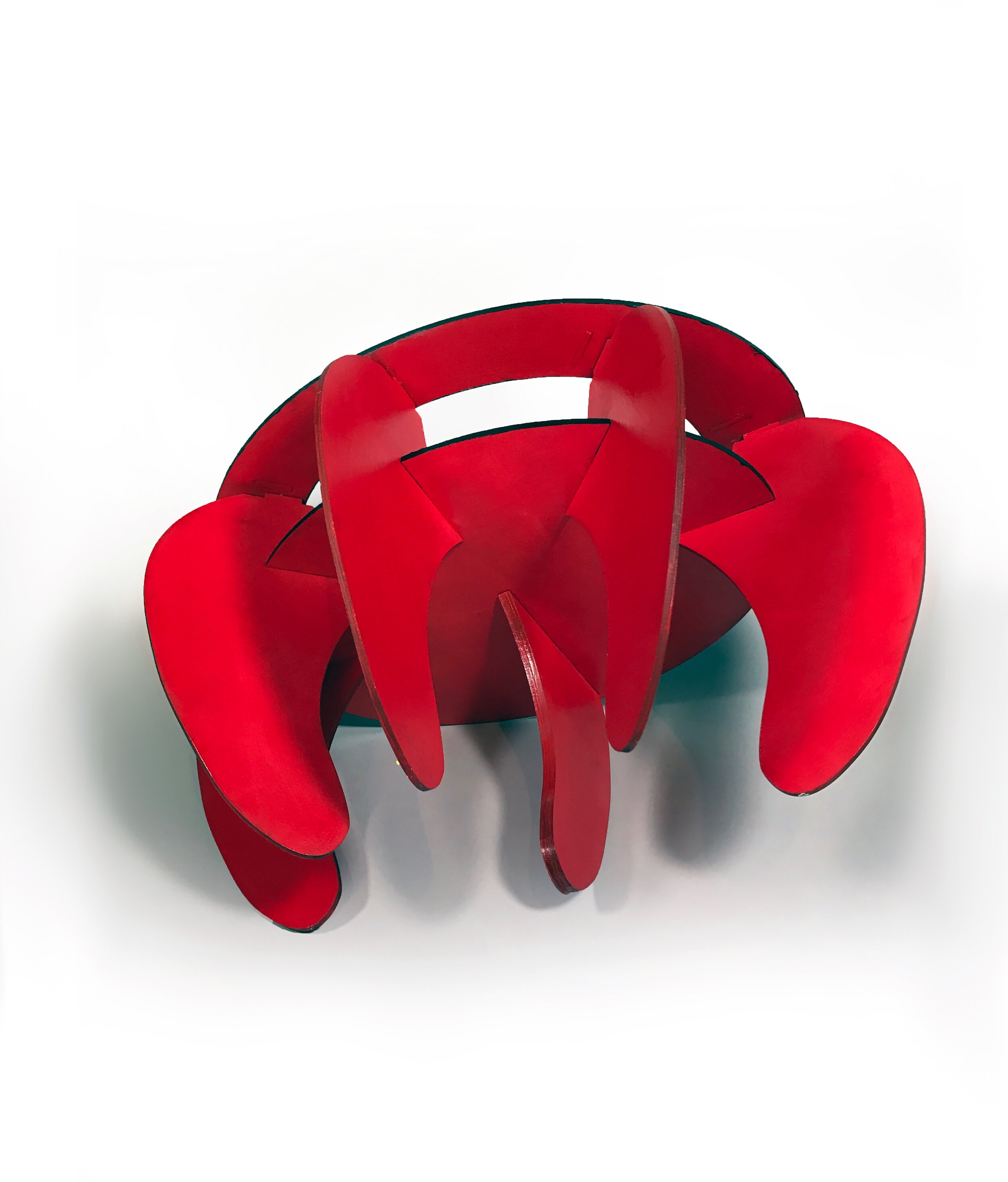
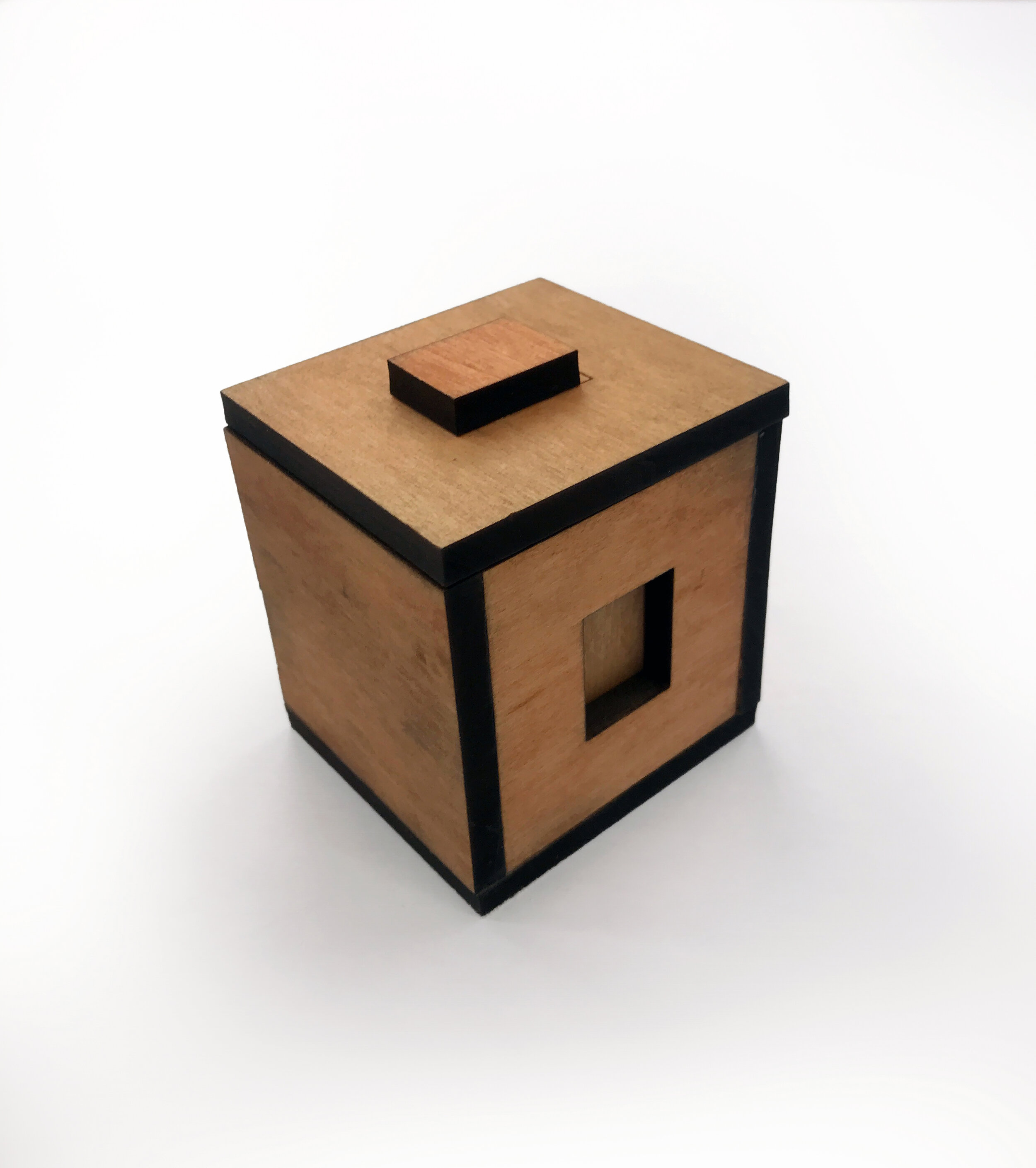
This is a laser-cut birch wood box/drawer stained with linseed oil and gouache. In a class I took my sophomore year of college called “Object Lessons”, we were given 5 dollars to spend on something at a thrift store or flea market and the project was to create a container for it. I found a small skeleton key that didn’t have a drawer it went to. Because skeleton keys are so versatile and this poor little key was lost despite its potential to fit in so many places, I wanted to create a space where it could explicitly be held and appreciated. This is a tiny box and drawer that not much can fit into besides this key, but it was my intention to give that key a sense of belonging.
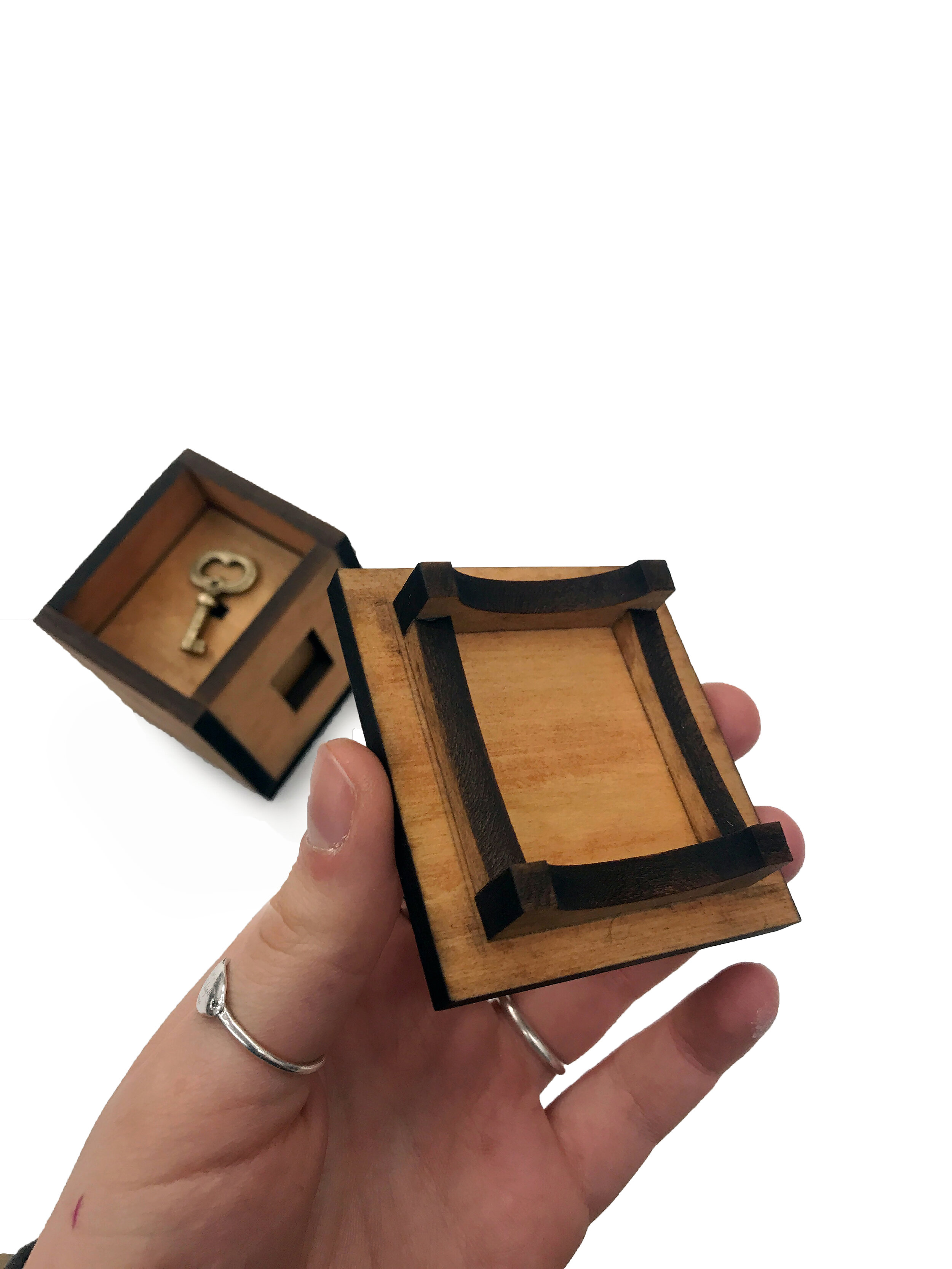
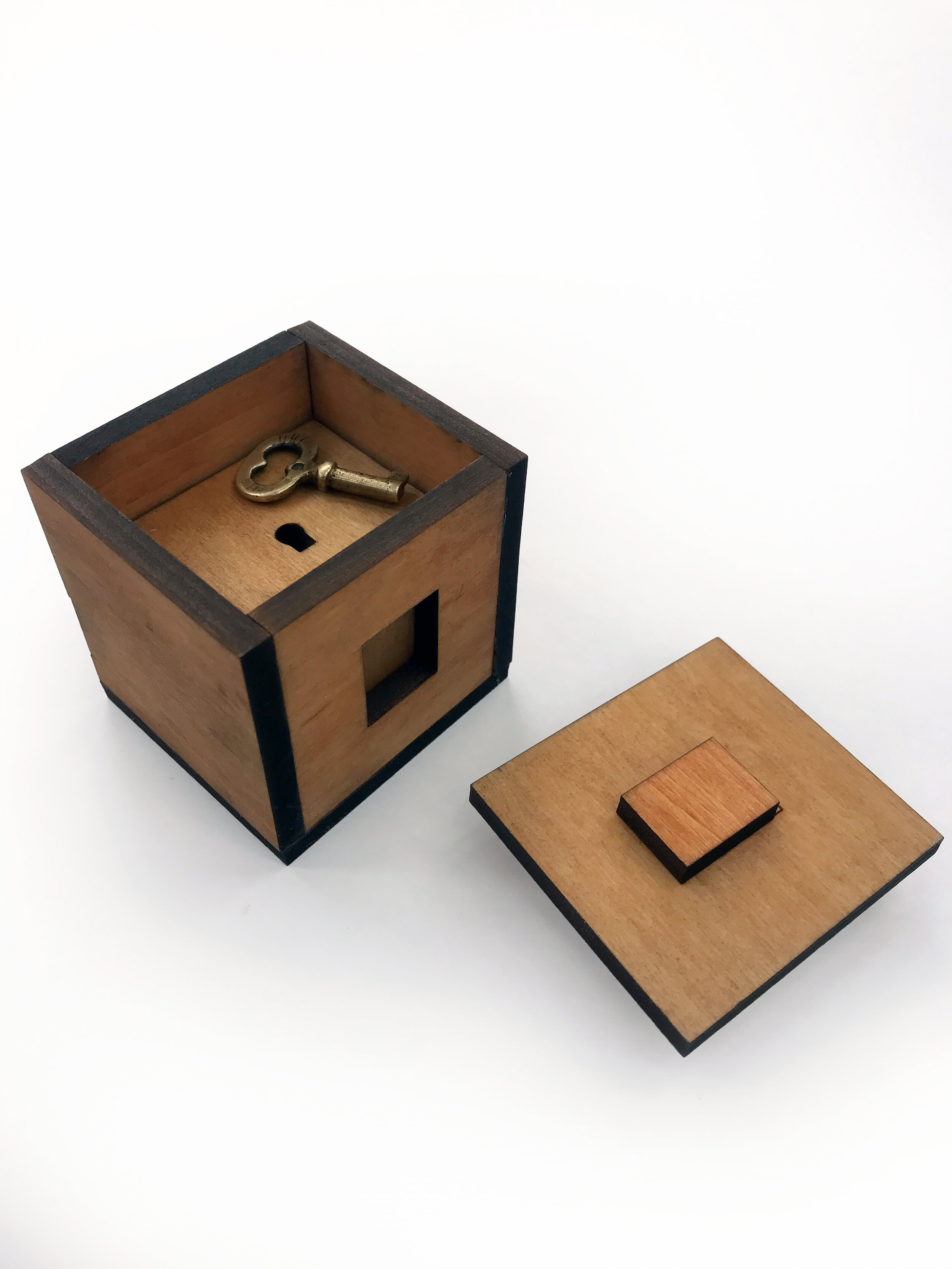
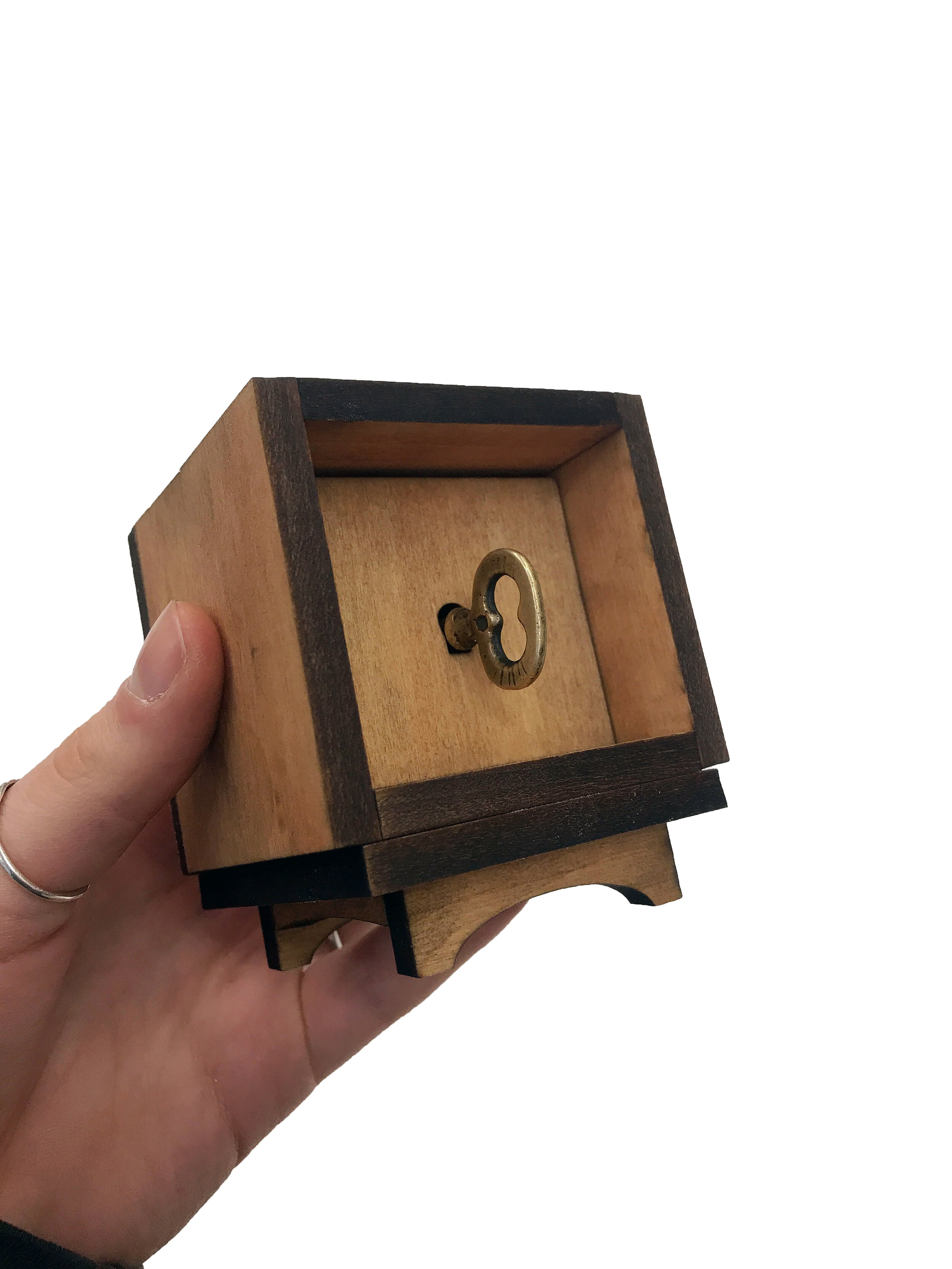
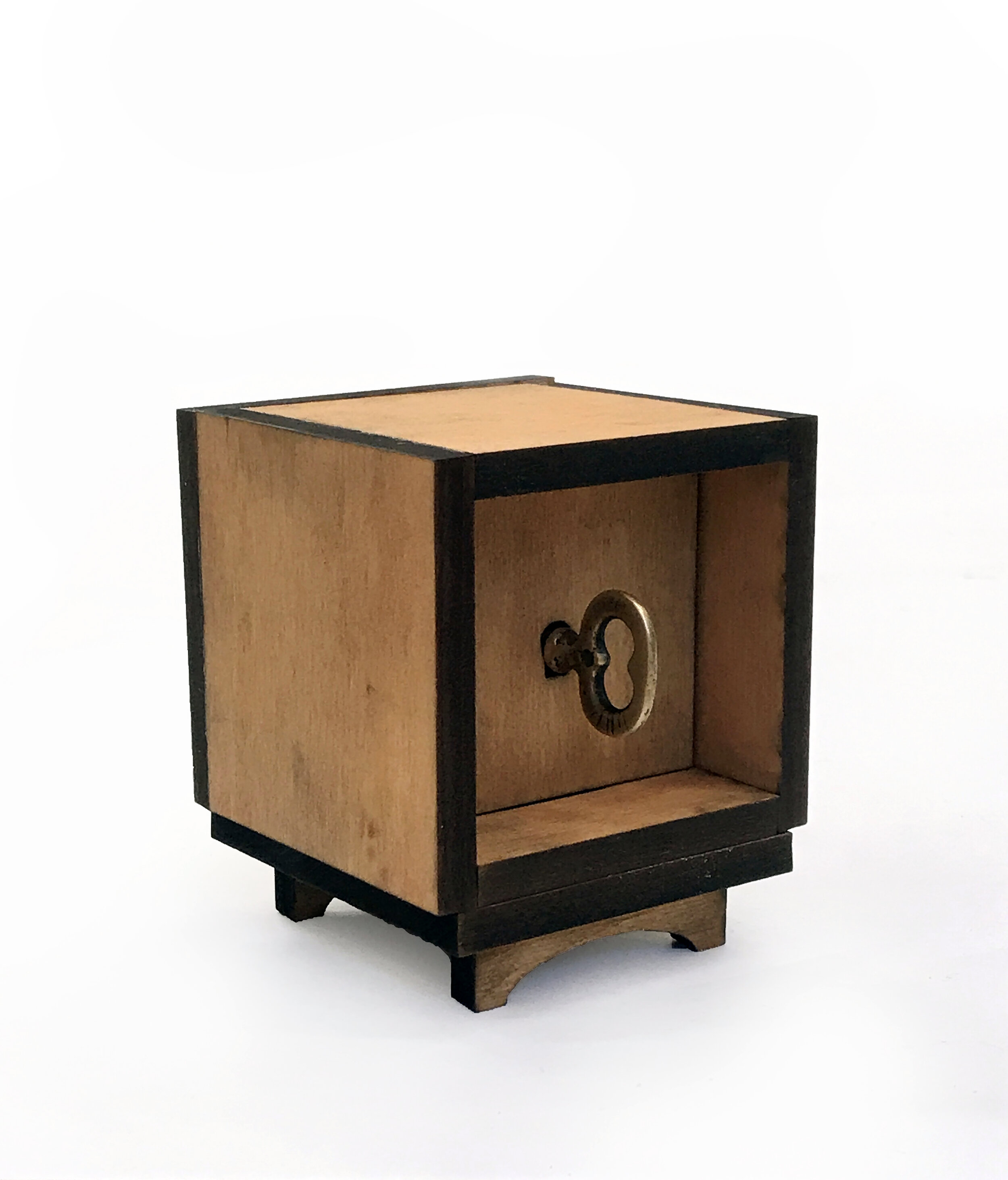
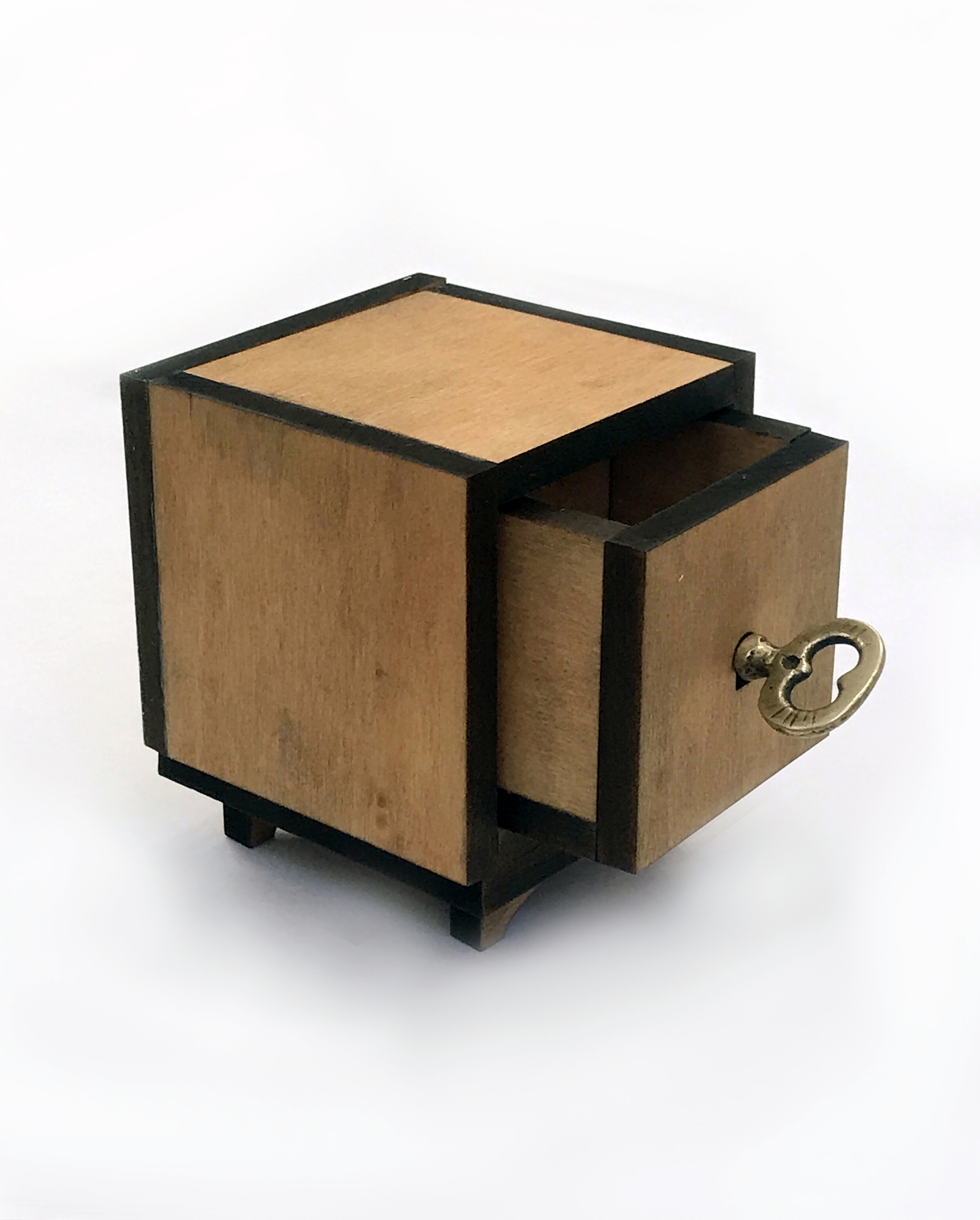

This pillow was constructed of dyed dryer sheets pieced together using rice starch paste and some sewn construction with a filling of more dryer sheets. This was for a class I took my Junior year of college called “Marking Memory”. The project was to create something that was not visually dominant– something that addressed other senses and was nostalgic in some way. The first home I lived in growing up smelled like dryer sheets. I didn’t know until years later when I walked into a different space that smelled like them and sort of transported me in a strange way to a place of both comfort and discomfort. You never know what your own house smells like, so the idea I could place it made that space feel much more distant and out of reach which was discomforting to grasp. But the smell at face-value was very comforting and familiar. The pillow is supposed to look like both a casket pillow and a throw pillow, so an object that can exist in both living spaces and “dead” spaces, referencing how nostalgia can either be a feeling of comfort or a feeling of loss and mourning for times that can’t repeat themselves. The rice starch paste dissolves in water, so I wanted this pillow to seem kind of haphazardly immortalized– something that seems like it was made to exist forever or that naturally could exist forever but was constructed to progressively fall apart over time, like the memories they represent that are precious and preserved but change and unravel each time they are recalled or recited. The physical feeling of this pillow is rough and gross and synthetic and the smell is overpowering and it looks kind of ugly and old. I wanted to create something that reflected how nostalgia can be a harsh and ugly and uncomfortable feeling even and especially if the memories one is nostalgic for are beautiful and gentle and precious.



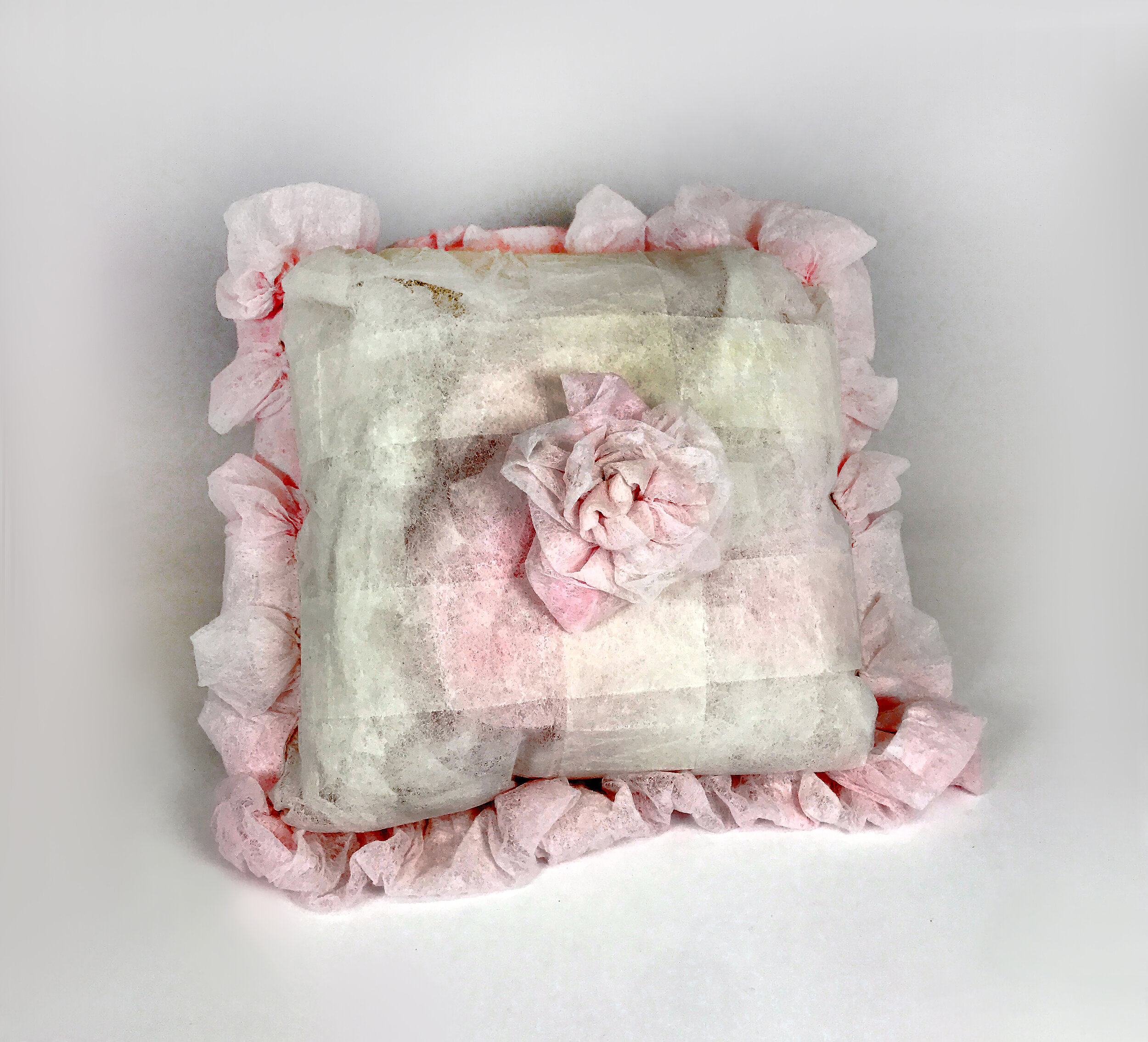
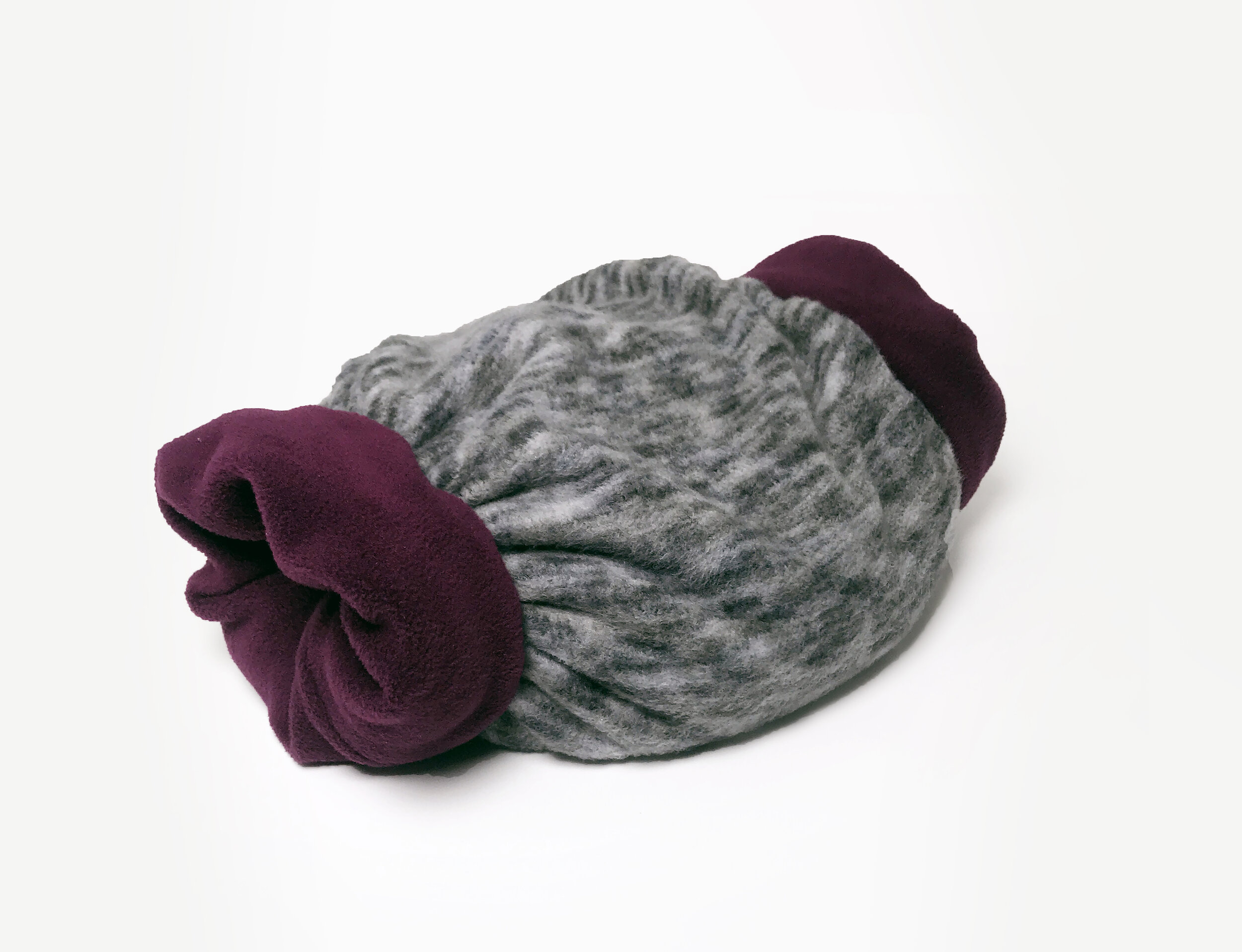
This is a weighted pillow/ hand warmer I made for a course called “Object Lessons” during my sophomore year of college. It is 5 pounds in weight, full of weighted beads.It was for an inclusive design project where we were prompted to think of a problem someone we knew or someone we didn’t know had, based on some form of temporary or permanent disability. My grandmother had Alzheimer’s and often didn’t know where to put her hands. They were often cold and she was often uncomfortable but unsure of how to identify the source of her discomfort. I thought if there was something that was warm and kind of encouraging to keep your hands in place– comfortable and contained but not in a limiting or forceful way– it could offer some comfort and ease some agitations or frustrations. It would serve as a little friendly reminder that your hands are safe and warm where they are, and you don’t have to think about where to put them or where not to put them. The best designs intended for people with disabilities are so good and comfortable they are adopted by the rest of society, surpassing stigmas of socially constructed limitations. I made this while my grandmother was alive, but sadly never got to give it to her. It is my hope though, that designs people like my grandmother would see value in, could be seen as relevant and valuable by others in society with more or less cognitive function and awareness. Objects are things that can bridge gaps between people if they are depended on in similar ways despite one’s perspective or experiences that differ from another’s. It was my aim through this design to cultivate a functional form that people’s perspectives could converge around, perhaps differing in more ways than one but in agreement that this object is useful and offers a sense of ease to perhaps complicated situations.
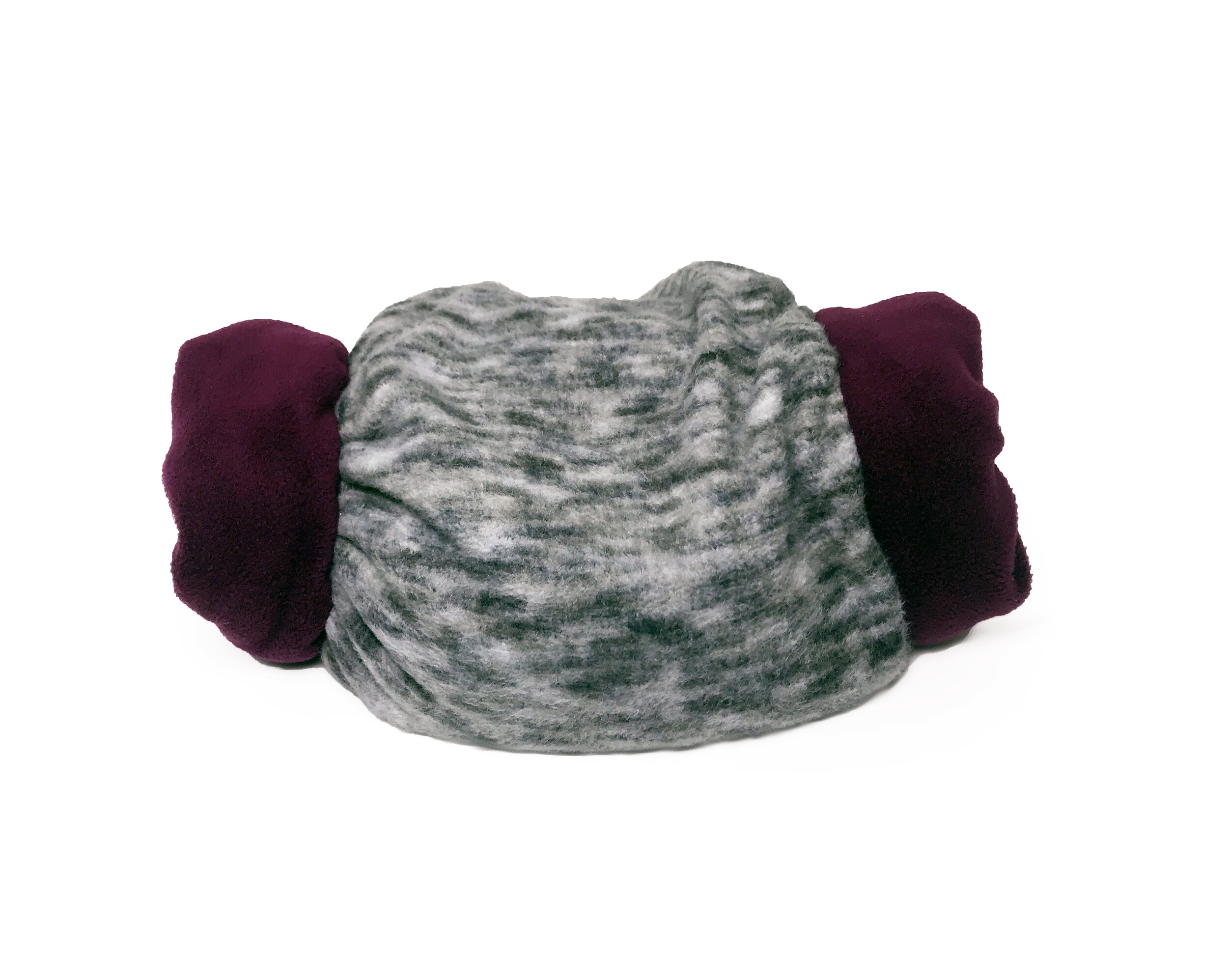
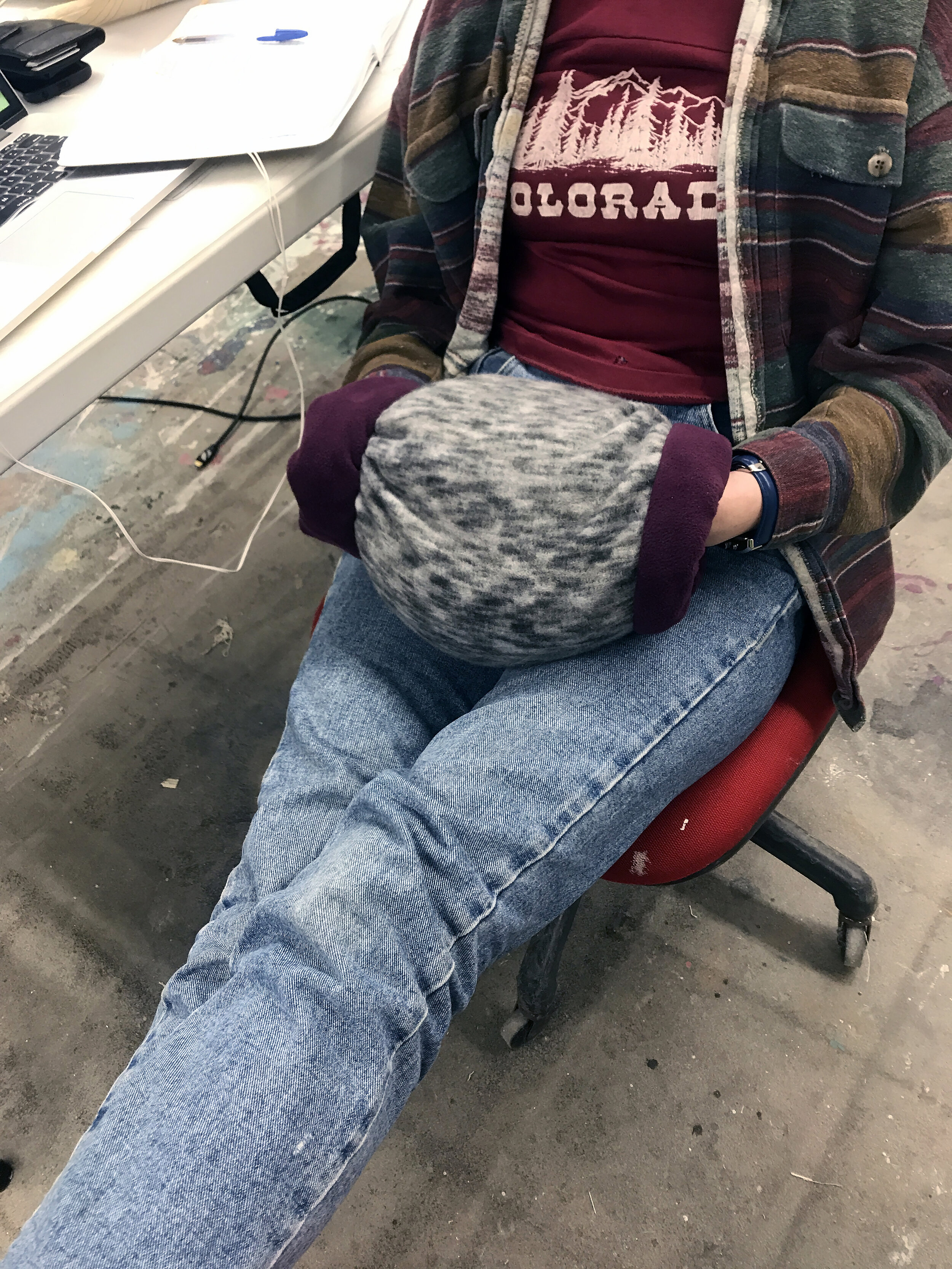























This is a 6”x 9” drypoint intaglio print etched on plastic. I based on a photograph I would always look at as a child in my father’s memory box. When I pursued this project, I found out that it was an image of my aunt whom I never met taken on a camping trip in the 1970s. It was an interesting experience getting to know her solely through this image.
This is a 9”x 12” copper plate etching. This was based on a photo my sister took at a market in Valencia, Spain a few years back. I wanted to capture nuanced illustrative surreal qualities through an observational study of a 35 mm film photograph. Film has a way of ignoring blemishes in a scene or taking particular notice of it, making it beautiful rather than merely a flaw in an otherwise beautiful scene. It was my intention to capture the subtleties of this image, staying true to certain realistic elements in some areas and in others departing from reality, entering a more illustrative realm in an effort to capitalize on the dream-like, ethereal beauty initially captured in the film.
This is a 12” x 9” wood cut print, partially laser-engraved and partially hand-carved. The image depicts my father and me in the community pool at my grandmother’s condo in Los Angeles county my sister and I spent many-a-summer in and around. This print and the 2 that precede it were part of a small collection of prints that expanded on an instant, ephemeral memory. Spending more time than that which is prescribed or allowed by a photograph or memory is a way of honoring a memory, in my opinion– exploring deconstructing it and reconstructing it through attentive mark making in an effort to visually and tangibly recall it and grapple with the nostalgia it evokes.
This was observational study of Michelangelo’s “Sibyl” sketch I began as a freshman in college. I rendered it in wax colored pencil and art crayon on toned paper. This was a really interesting study I found myself revisiting over the course of over a year. I found I was more critical than I typically am in rendering sketches given that I knew what the resolved image should look like, so each mark carried more significance and precision. I learned a lot from this drawing including how to apply the same critical mentality to work I create originally, which was a blessing (and a curse) to acquire.
This is a 16” x 24” texture map of Los Angeles county, CA, where I grew up. I used acrylic paint applied on transparent paper mounted to wood. I traced over 2 different archival maps and 1 contemporary map to collect different information– certain areas and lines I wanted to see in it– and then mounted it to wood using rice starch paste. The patterns signify where I existed in the city at the age intervals described in the map key and new places I was exposed to at those ages. This texture map is intended to seem like a nostalgic toy. When one interacts with it, they see a map, something they recognize and expect to understand, but they have to touch and explore it in order to collect the information it offers and it still maintains sort of disorienting qualities a child would accept as overwhelming to grapple with. In this way, it is supposed to make the viewer feel like a child since this map traces my development as I grew up. The designs get more complex and fluid as the years increase, sort of referencing artistic growth too and where I was able to explore creative inclinations throughout the city as I grew within it.
This is the map key that corresponds with the texture map. It is a block of wood, intended to evoke “nostalgic toy” qualities. The writing was traced on transparent paper and then mounted to wood using rice starch paste and the textures were created through depositing acrylic paint using a bottle with a hollow needle attachment.
This is an unconventional stool constructed of laser-cut birch wood and painted with acrylic beneath a layer of varnish. This was an exploration of how transferrable the designs I apply in ceramics are to other objects, functional or not functional, explored in a project I made a few years ago as a freshman in college.
This is a laser-cut birch wood box/drawer stained with linseed oil and gouache. In a class I took my sophomore year of college called “Object Lessons”, we were given 5 dollars to spend on something at a thrift store or flea market and the project was to create a container for it. I found a small skeleton key that didn’t have a drawer it went to. Because skeleton keys are so versatile and this poor little key was lost despite its potential to fit in so many places, I wanted to create a space where it could explicitly be held and appreciated. This is a tiny box and drawer that not much can fit into besides this key, but it was my intention to give that key a sense of belonging.
This pillow was constructed of dyed dryer sheets pieced together using rice starch paste and some sewn construction with a filling of more dryer sheets. This was for a class I took my Junior year of college called “Marking Memory”. The project was to create something that was not visually dominant– something that addressed other senses and was nostalgic in some way. The first home I lived in growing up smelled like dryer sheets. I didn’t know until years later when I walked into a different space that smelled like them and sort of transported me in a strange way to a place of both comfort and discomfort. You never know what your own house smells like, so the idea I could place it made that space feel much more distant and out of reach which was discomforting to grasp. But the smell at face-value was very comforting and familiar. The pillow is supposed to look like both a casket pillow and a throw pillow, so an object that can exist in both living spaces and “dead” spaces, referencing how nostalgia can either be a feeling of comfort or a feeling of loss and mourning for times that can’t repeat themselves. The rice starch paste dissolves in water, so I wanted this pillow to seem kind of haphazardly immortalized– something that seems like it was made to exist forever or that naturally could exist forever but was constructed to progressively fall apart over time, like the memories they represent that are precious and preserved but change and unravel each time they are recalled or recited. The physical feeling of this pillow is rough and gross and synthetic and the smell is overpowering and it looks kind of ugly and old. I wanted to create something that reflected how nostalgia can be a harsh and ugly and uncomfortable feeling even and especially if the memories one is nostalgic for are beautiful and gentle and precious.
This is a weighted pillow/ hand warmer I made for a course called “Object Lessons” during my sophomore year of college. It is 5 pounds in weight, full of weighted beads.It was for an inclusive design project where we were prompted to think of a problem someone we knew or someone we didn’t know had, based on some form of temporary or permanent disability. My grandmother had Alzheimer’s and often didn’t know where to put her hands. They were often cold and she was often uncomfortable but unsure of how to identify the source of her discomfort. I thought if there was something that was warm and kind of encouraging to keep your hands in place– comfortable and contained but not in a limiting or forceful way– it could offer some comfort and ease some agitations or frustrations. It would serve as a little friendly reminder that your hands are safe and warm where they are, and you don’t have to think about where to put them or where not to put them. The best designs intended for people with disabilities are so good and comfortable they are adopted by the rest of society, surpassing stigmas of socially constructed limitations. I made this while my grandmother was alive, but sadly never got to give it to her. It is my hope though, that designs people like my grandmother would see value in, could be seen as relevant and valuable by others in society with more or less cognitive function and awareness. Objects are things that can bridge gaps between people if they are depended on in similar ways despite one’s perspective or experiences that differ from another’s. It was my aim through this design to cultivate a functional form that people’s perspectives could converge around, perhaps differing in more ways than one but in agreement that this object is useful and offers a sense of ease to perhaps complicated situations.